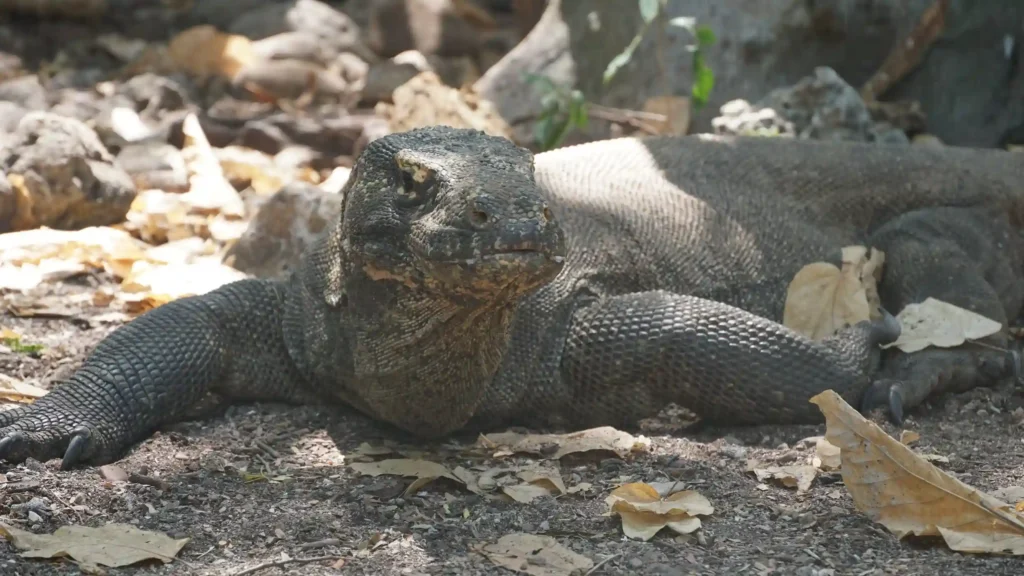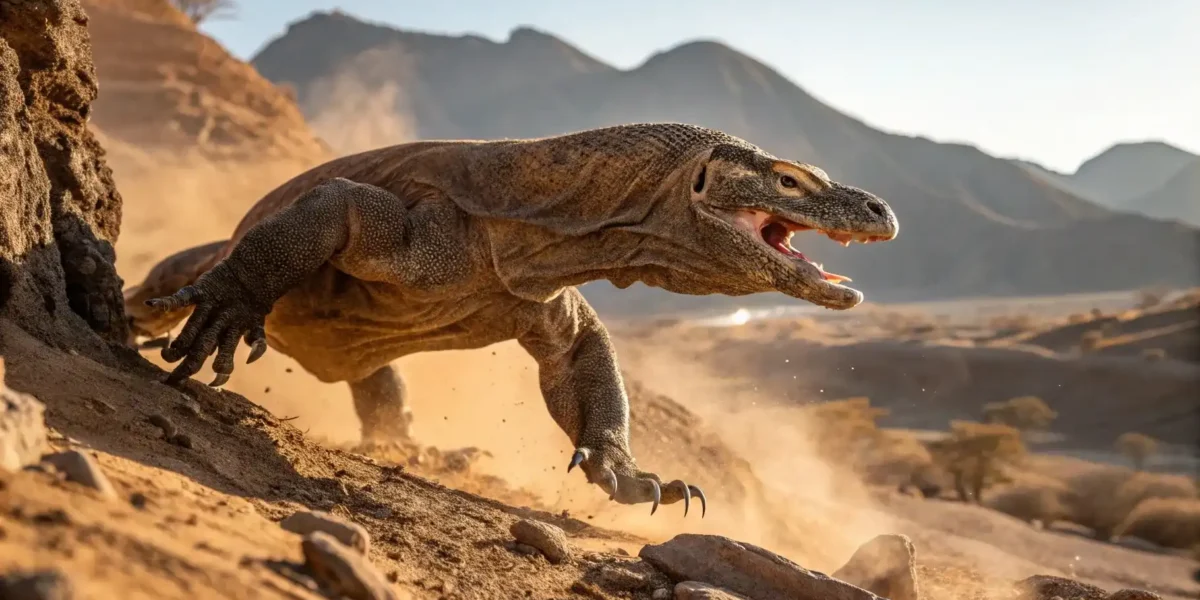When it comes to animals from two countries, the Komodo dragon and kangaroo are the ultimate icons. The Komodo dragon is the world’s biggest lizard from Indonesia, the kangaroo is Australia’s symbol and can jump and run like crazy. Both have some pretty cool features. But what if they fought? Who would win? Let’s get into these two awesome animals!
Komodo Dragon: The Giant of Indonesia

Komodo dragon is a force to be reckoned with. This reptile can be up to 3 meters (10 feet) long and over 150 pounds. While its size is intimidating in its habitat, its true power is in its venomous bite. This bite not only causes deep wounds but also has toxins that paralyzes its prey.
Komodo dragons live on several Indonesian islands, Komodo, Rinca, Flores and Gili Motang. Their habitats range from tropical forests to dry savannas. With their muscular body and strong tail they balance agility and brute force, so they are formidable hunters despite their size.
As ambush predators Komodo dragons rely on patience and strength. They wait for hours along prey paths before striking with precision. Their venomous bite and the bacteria in their saliva means even if the prey escapes the initial attack it will still die.
Kangaroo: Australia’s Symbol

The kangaroo is Australia’s marsupial icon, famous for its crazy jumping ability. With powerful and big hind legs kangaroos can jump 8 meters in one bound and run up to 60 km/h. Their strong tail provides balance while jumping and support when standing or fighting.
Kangaroos live in mobs which provides protection from predators and social interaction. Female kangaroos have pouches to nurture and feed their young joeys until they are independent.
As herbivores kangaroos eat grass, leaves and fruits. Their specialized stomachs allows them to digest tough vegetation and maintain the balance of the ecosystem in their habitat.
Read more: Wildlife Wonders: From Australia’s Kangaroos to Indonesia’s Komodo Dragons
Komodo Dragon vs. Kangaroo

Here’s a quick comparison of the Komodo dragon and kangaroo:
| Aspect | Komodo dragon | Kangaroo |
| Habitat | Komodo and Rinca Island | Forest, savannas, and grasslands in Australia |
| Size | Up to 3 meters, 70-90 kg | Up to 2 meters, 50-90 kg |
| Diet | Carnivorous (apex predator) | Herbivorous (grass, leaves, fruits) |
| Speed | Up to 20 km/h but powerful | Up to 60 km/h |
| Defense | Venomous bite, protective scales | Strong hind leg kicks |
| Special Adaptations | Venom, serrated teeth | Strong legs and tail |
Physical Differences
Physically they are worlds apart. Komodo dragons have scaly skin like armor, extra protection from threats. Kangaroos have fur for insulation and camouflage in their environment.
Komodo dragons use their tail for balance and to move across rough terrain, kangaroos use their long powerful hind legs to jump with efficiency. These are their unique adaptations to their world.
Diet and Hunting
Komodo dragons are apex predators that use ambush tactics to catch their prey. They wait for the perfect moment to strike with a poisonous bite. Any prey bitten by a Komodo dragon will die within days of the bite from the combination of toxins and bacteria.
Kangaroos are herbivores that use speed and agility to find food and avoid predators. They eat grass and leaves that are hard to digest which helps to keep their ecosystem in balance. These different feeding and hunting habits show their different survival strategies.
Defense
Both have different defense mechanisms. Komodo dragons use their sharp teeth and poisonous bite to protect themselves. This combination of physical strength and toxins makes them formidable.
Kangaroos use powerful kicks from their hind legs. These can injure predators. Their strong tails also give them balance so they are hard to confront in a fight.
Habitat and Range
Komodo dragons are only found on a few islands in Indonesia, Komodo and Rinca which are part of Komodo National Park. Their habitat is tropical forests, savannas and dry grasslands.
Kangaroos are found all over Australia and can live in forests, savannas and grasslands. Their ability to adapt to different environments makes them one of Australia’s most iconic animals.
Survival Adaptations
Komodo dragons have a keen sense of smell to detect carcasses from a distance – a vital skill for hunting and survival. They have good eyesight to detect movement.
Kangaroos have powerful hind legs to jump far to escape predators and forage for food across the plains. To cool down they lick their forearms to evaporate heat.
Komodo Dragon vs. Kangaroo: Who would win?

The Komodo dragon is good at physical strength and hunting tactics. Its venomous bite and ambush incapacitate prey quickly. The kangaroo’s speed and agility are its defense. Its powerful hind leg kicks can seriously hurt any approaching predator.
In a hypothetical situation where a Komodo dragon and a kangaroo face-off, the outcome depends on the circumstances. The Komodo dragon’s strength and venomous bite are a deadly combination, but the kangaroo’s speed and powerful kicks can evade or counterattack. This hypothetical battle shows the difference in survival strategy between a predator and a herbivore.
Visit the Komodo Dragons with Komodo Luxury
If you like the world of Komodo dragons, visiting them in their natural habitat will be an adventure of a lifetime. Komodo Luxury offers luxury and safe Komodo Island tour to Komodo Island and Rinca Island within Komodo National Park. On these tours, you can see Komodo dragons up close and learn about their ecology and conservation.

Plus other iconic places in Komodo National Park, Pink Beach, Manta Point, Padar Island. With our guides. Guaranteed unforgettable and support conservation of Indonesia.
Read more: Is a Komodo Dragon a Dinosaur? The Surprising Truth






















